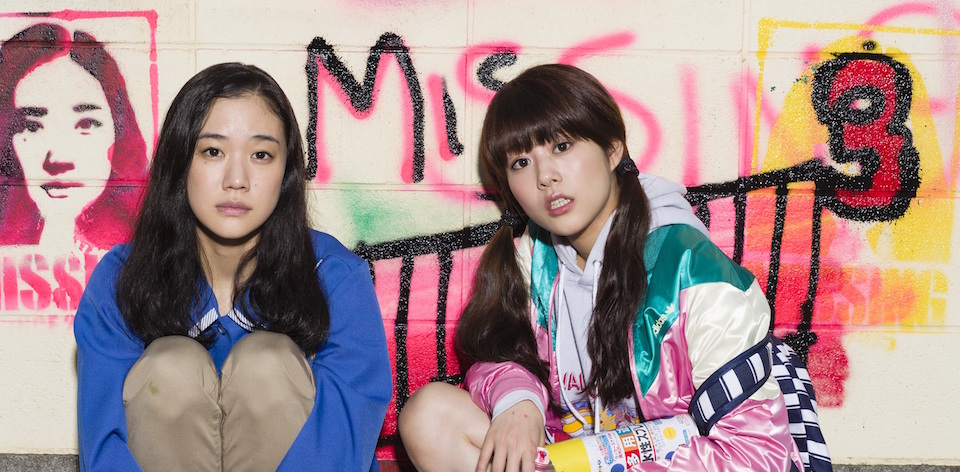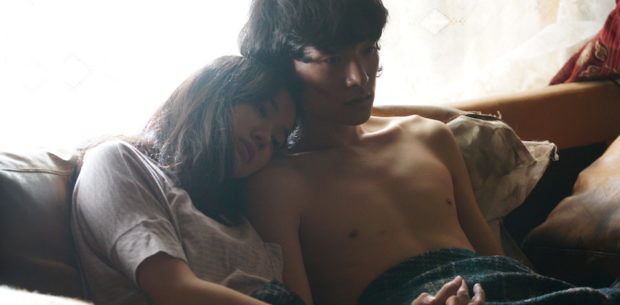The alternative title for JAPANESE GIRLS NEVER DIE is Haruko Azumi Is Missing (アズミ・ハルコは行方不明), a figurative and literal declaration on the marginalisation of women in Japanese society. It continues filmmaker Daigo Matsui’s exploration of young women in Japan, beginning with Wonderful World End (2015) and Our Huff and Puff Journey (2016). The latest entry in the thematic trilogy is rampageous but also sharply satirical.
Misaki Setoyama screenplay, based on the novel by Mariko Yamauchi, takes place over split timelines. When we meet Haruko (Yû Aoi), an office worker in her late 20s, we already know that at some stage she will go missing. Two events begin to grow into a frenzy: spray-painted “Missing Girl” posters bearing Haruko’s face are spotted all over town. Almost in reaction to this, gangs of Japanese schoolgirls are beating up young men, causing a curfew to be set for boys in the area.
Matsui’s film wears its outlook on its brightly coloured sleeve, with Haruko’s backstory filled with all too real tropes of a young woman’s experience in Japanese workplaces (and let’s face it, most western ones too). Her tone-deaf bosses constantly make comments about her appearance and marital status, while her late-30s coworker is treated even worse for her unmarried status. Haruko lives with her family and pines for neighbour Yuji (Huwie Ishizaki). There is nothing extraordinary about Haruko, but that’s precisely the point: she is all women, she is nobody, she is invisible, but her image becomes an icon.
The intersecting storyline of spray-painting duo of Yukio (Taiga) and Manabu (Shono Hayama) are joined by Yukio’s casual hookup Aina (Mitsuki Takahata), and their significance is just as obvious. Aina becomes part of their gang, written off as ‘easy’ by Yukio and virtually handed over to Manabu as a used lover. By his own admission, Yukio is simply waiting for someone younger. So even the subversive anarchists are tied to the cycle of misogyny.
JAPANESE GIRLS NEVER DIE should not strictly be considered as a traditional narrative, and it’s very modus operandi is to subvert traditions. Nevertheless, this approach doesn’t make it easy on the viewer to follow along. In addition to the often confused chronology, Setoyama’s well-meaning screenplay tries to bite off a very large chunk of social issues. Deep into the second act, the city incorporates the “Missing Girl” art into government approved upgrades of the Dreamland theme park, giving the film an oddly-timed side-serving on the corporatisation of art.
The final moments of the film play out as a kind of metaphoric last stand, in which the cornered schoolgirl gang use their fingertips to ‘shoot’ their way out of a theatre surrounded by cops. Their anarchic glee is the tone Matsui leaves us with, proving the quoted adage that “a good life is the best revenge.” It’s the ultimate rebel yell of the next generation of Japanese women, perhaps telling us conclusively that Japanese girls never die, but the institutional sexism has deadline.
JAPANESE GIRLS NEVER DIE played as part of the Melbourne International Film Festival.







